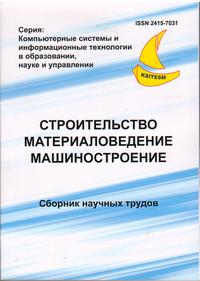Express diagnostics methodology of human health
Keywords:
express diagnostics, human life diagram, energy-information field, vitality, information value of system, energy value of system.Abstract
Summary. Purpose. To develop an express diagnostics methodology of human health based on a comparison of living standards and health states in order to determine the onset of a decease, allowing to adopt the necessary treatment and thus extending longevity. Methodology. The idea of express diagnostics methodology of human health built upon the following concepts: -human life diagram formed on the dates of birth determines living standards (material wealth, spiritual life, implementation of life goals, state of health, etc.) at some stage and evaluates health risks and the time of their incurrence. However, it is impossible to establish a diagnosis using a life diagram; -with a human energy-information field you can predict deceases such as cancer, brain hemorrhage or heart attack that one may encounter in future right after the birth of a child, but you can not forecast the onset of the decease. The question is – how to determine the onset of a decease. To address this problem, the authors suggest the method of express diagnostics of human health based on a comparison of living standards and health states of a human. Findings. An express diagnostics methodology of human health was developed, which determines the onset of a decease, allowing to adopt the necessary treatment and thus extends longevity. A connection between the vitality and energy-information field level of a human has been confirmed, which enables to evaluate the health conditions. Originality. The following rules were adopted during the creation of the above-mentioned connection formula: -the threshold vitality divides all systems into living and non-living systems; -the information value of a system equals its energy value at the point of threshold vitality; - the first level of human energy-information field equals 1 and corresponds to the threshold vitality; - the highest possible level of energy-information field amounts to 7. The energy-information field scale is built upon the above-mentioned rules, and the vitality is calculated for each level. The dependence adjustment was made via «trend line» instrument of Excel application, which includes the least squares method. Practical value. The proposed method of express diagnostics of human health is designed to be used by doctors.
References
Volchenko V.N. Izmerenie ekstremalnykh znacheniy fizicheskikh poley cheloveka-operatora. Tekhnicheskie aspekty refleksoterapii i sistemy diagnostiki [Measuring of the man-operator physical fields by the extreme value. Technical aspect of reflexotherapy and diagnostic system]. Kalinin, 1984, 53-59 pp. (in Russian).
Ershova N.M. Svidotstvo pro reiestratsiiu avtorskoho prava na tvir naukovoho kharakteru № 42184 vid 13.02.2012. “Metodika formirovaniia komandy proekta na osnove psikholohicheskoy sovmestimosti” [Certificate of author's right ‘Methods of the project team on the basis of psychological compatibility’ № 42184, 13.02.2012].
Ershova N.M. Avtomatizirovannaya podgotovka i oformlenie dokumentov [Automatic preparation and processing of documents]. Dnepropetrovsk: PGASA, 2012, 236 p. (in Russian).
Ershova N.M., Chirin D.A., Dementeva T.A. Optimizatsiya v upravlenii proektami [Optimization of the project management]. Dnepropetrovsk: PGASA, 2014, 158 p. (in Russian).
Ershova N.M. and Filipov Yu.O. Svidotstvo pro reiestratsiiu avtorskoho prava na tvir naukovoho kharakteru “Ekspress diagnostika zdorovya cheloveka” № 66333 vid 30.06.2016 [Certificate of author's right ‘Express diagnostics methodology of human health’ № 66333, 30.06.2016].
Ershova N.M. and Filipov Yu.O. Svidotstvo pro reiestratsiiu avtorskogo prava na tvir naukovogo kharakteru “Formula svyazi vitalnosti s urovnyami informatsionno-energeticheskogo polya cheloveka” № 66332 vid 30.06.2016. [Certificate of author's right ‘Connection formula of vitality value with energy-information field levels of a human’ № 66332, 30.06.2016.].
Lagerkvist K. and Lenard L. Numerologiya [Numerology]. Moscow: Astrel Publ., 2003, 428 p. (in Russian).
Filippov Yu. A. Informatsionno-energeticheskaya technologiya diagnostiki zabolevaniy v neotlozhnoy gastroenterologii [Information-energy technology of the disease diagnostic in gastroenterology emergency service]. Dnepropetrovsk: Orbita-Service Publ., 2004, pp. 299-338. (in Russian).
Downloads
Published
Issue
Section
License
Редакція Видання категорично засуджує прояви плагіату в статтях та вживає всіх можливих заходів для його недопущення. Плагіат розглядається як форма порушення авторських прав і наукової етики.
При виявлені у статті більш ніж 25% запозиченого тексту без відповідних посилань та використання лапок, стаття кваліфікується як така, що містить плагіат. У цьому випадку стаття більше не розглядається редакцією, а автор отримує перше попередження.
Автори, в статтях яких повторно виявлено плагіат, не зможуть публікуватися в усіх журналах Видавництва ДВНЗ «Придніпровська державна академія будівництва та архітектури».
Автори, які публікуються у цьому журналі, погоджуються з наступними умовами:
- Автори залишають за собою право на авторство своєї роботи та передають журналу право першої публікації цієї роботи на умовах ліцензії Creative Commons Attribution License, котра дозволяє іншим особам вільно розповсюджувати опубліковану роботу з обов'язковим посиланням на авторів оригінальної роботи та першу публікацію роботи у цьому журналі.
- Автори мають право укладати самостійні додаткові угоди щодо неексклюзивного розповсюдження роботи у тому вигляді, в якому вона була опублікована цим журналом (наприклад, розміщувати роботу в електронному сховищі установи або публікувати у складі монографії), за умови збереження посилання на першу публікацію роботи у цьому журналі.
- Політика журналу дозволяє і заохочує розміщення авторами в мережі Інтернет (наприклад, у сховищах установ або на особистих веб-сайтах) рукопису роботи, як до подання цього рукопису до редакції, так і під час його редакційного опрацювання, оскільки це сприяє виникненню продуктивної наукової дискусії та позитивно позначається на оперативності та динаміці цитування опублікованої роботи (див. The Effect of Open Access).

